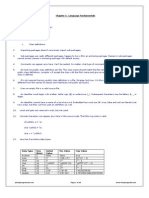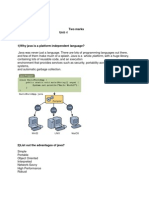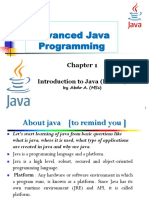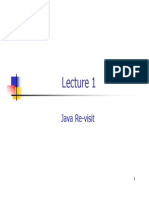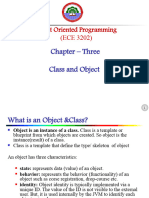0% found this document useful (0 votes)
40 views35 pages004 - Writing Java Classes - 1
Here are the access rules for the different access specifiers:
- private: Accessible only within the class
- default: Accessible only within the package
- protected: Accessible within the package and subclasses in other packages
- public: Accessible everywhere
So based on the access specifiers, the Test class in the other package would only be able to access public members of the class in the first package. It would not be able to access private, default or protected members.
Uploaded by
shakir.helloCopyright
© © All Rights Reserved
We take content rights seriously. If you suspect this is your content, claim it here.
Available Formats
Download as PPTX, PDF, TXT or read online on Scribd
0% found this document useful (0 votes)
40 views35 pages004 - Writing Java Classes - 1
Here are the access rules for the different access specifiers:
- private: Accessible only within the class
- default: Accessible only within the package
- protected: Accessible within the package and subclasses in other packages
- public: Accessible everywhere
So based on the access specifiers, the Test class in the other package would only be able to access public members of the class in the first package. It would not be able to access private, default or protected members.
Uploaded by
shakir.helloCopyright
© © All Rights Reserved
We take content rights seriously. If you suspect this is your content, claim it here.
Available Formats
Download as PPTX, PDF, TXT or read online on Scribd
/ 35









